Types of Sequences (Edexcel GCSE Maths): Revision Note
Did this video help you?
Types of Sequences
What other sequences are there?
Linear and quadratic sequences are particular types of sequence covered in previous notes
Other sequences include geometric and Fibonacci sequences, which are looked at in more detail below
Other sequences include cube numbers and triangular numbers
Another common type of sequence in exam questions, is fractions with combinations of the above
Look for anything that makes the position-to-term and/or the term-to-term rule easy to spot
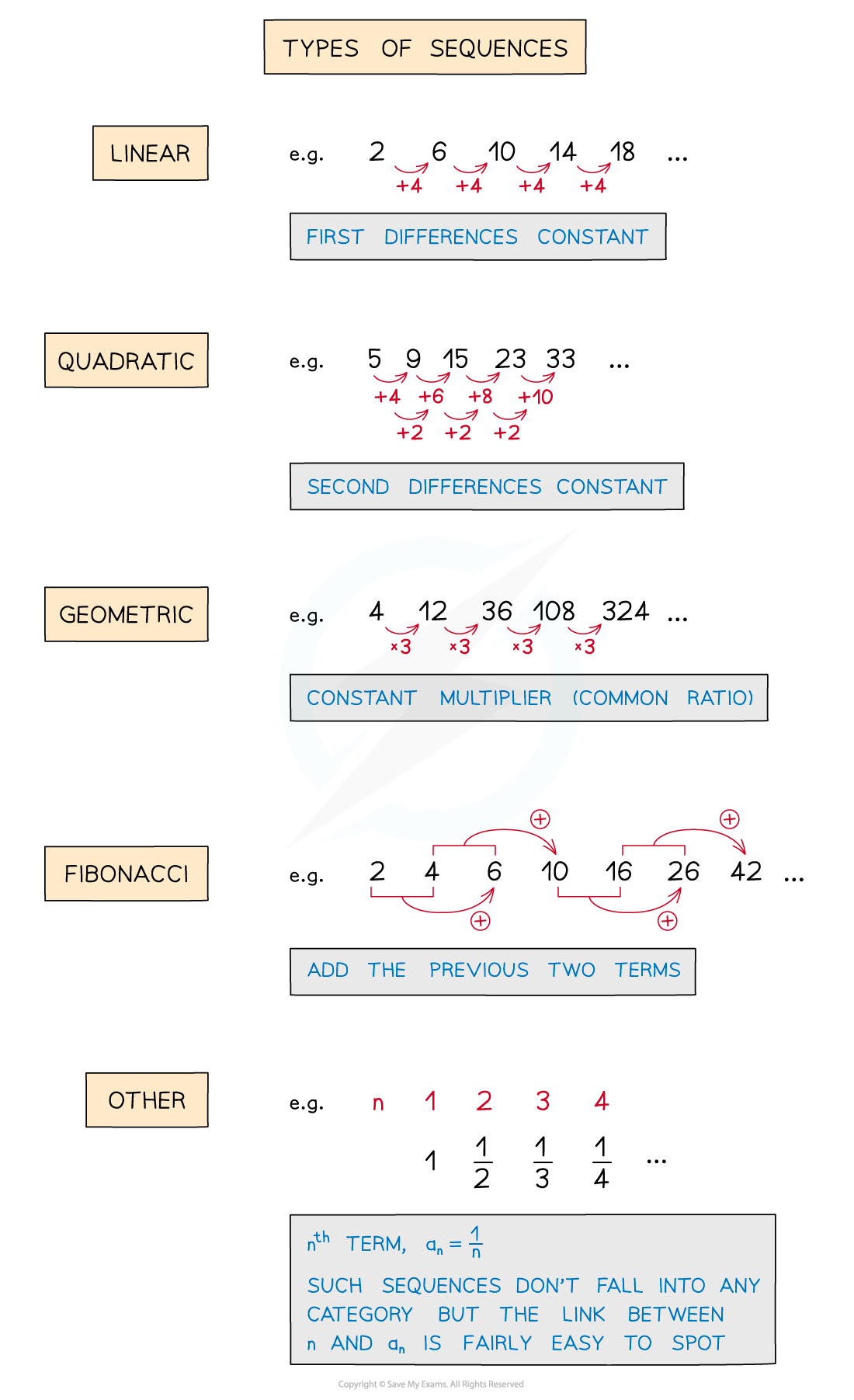
What is a geometric sequence?
A geometric sequence can also be referred to as a geometric progression and sometimes as an exponential sequence
In a geometric sequence, the term-to-term rule would be to multiply by a constant, r
an+1 = r.an
r is called the common ratio and can be found by dividing any two consecutive terms, or
r = an+1 / an
In the sequence 4, 8, 16, 32, 64, ... the common ratio, r, would be 2 (8 ÷ 4 or 16 ÷ 8 or 32 ÷ 16 and so on)

What is a Fibonacci sequence?
The Fibonacci sequence is 1, 1, 2, 3, 5, 8, 13, 21, 34, 55, ...
The sequence starts with the first two terms as 1
Each subsequent term is the sum of the previous two
ie The term-to-term rule is an+2 = an+1 + an
Notice that two terms are needed to start a Fibonacci sequence
Any sequence that has the term-to-term rule of adding the previous two terms is called a Fibonacci sequence but the first two terms will not both be 1
Fibonacci sequences occur a lot in nature such as the number of petals of flowers
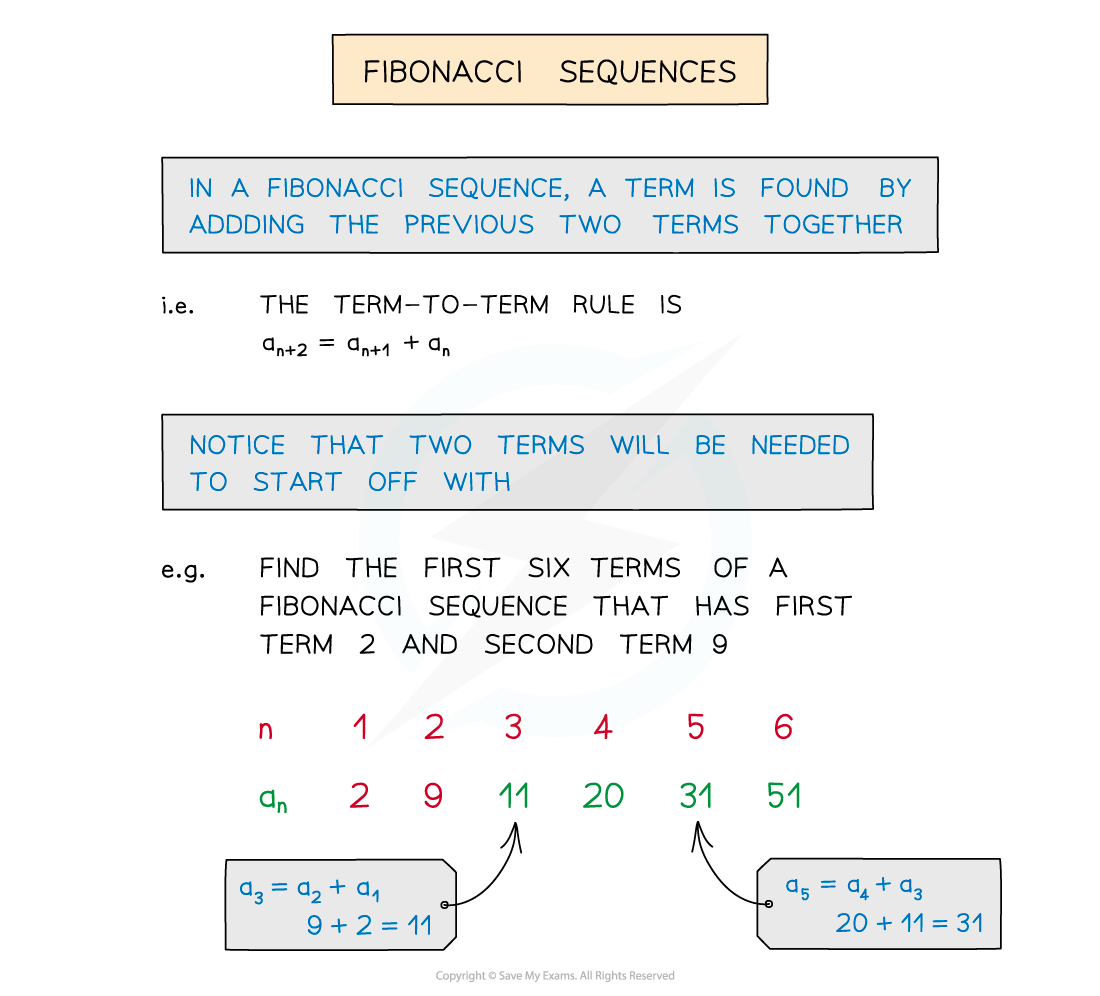
Problem solving and sequences
When the type of sequence is known it is possible to find unknown terms within the sequence
This can lead to problems involving setting up and solving equations
Possibly simultaneous equations
Other problems may involve sequences that are related to common number sequences such as square numbers, cube numbers and triangular numbers
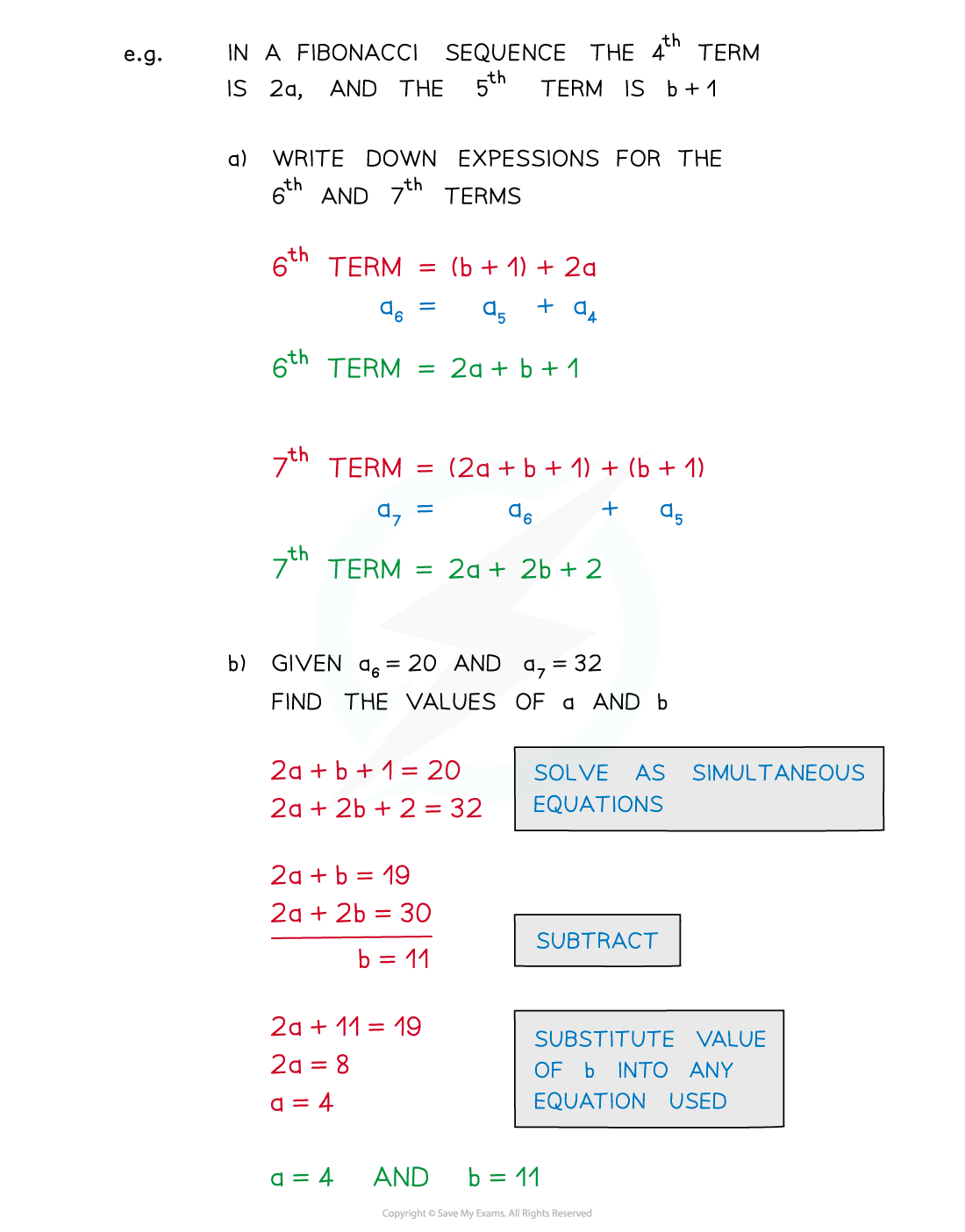
Worked Example
a)
Identify the types of sequence below;
i) 4, 5, 9, 14, 23, 37, 60, ...
ii) 6, 10, 16, 24, 34, ...
iii) 12, 7, 2, -3, ...
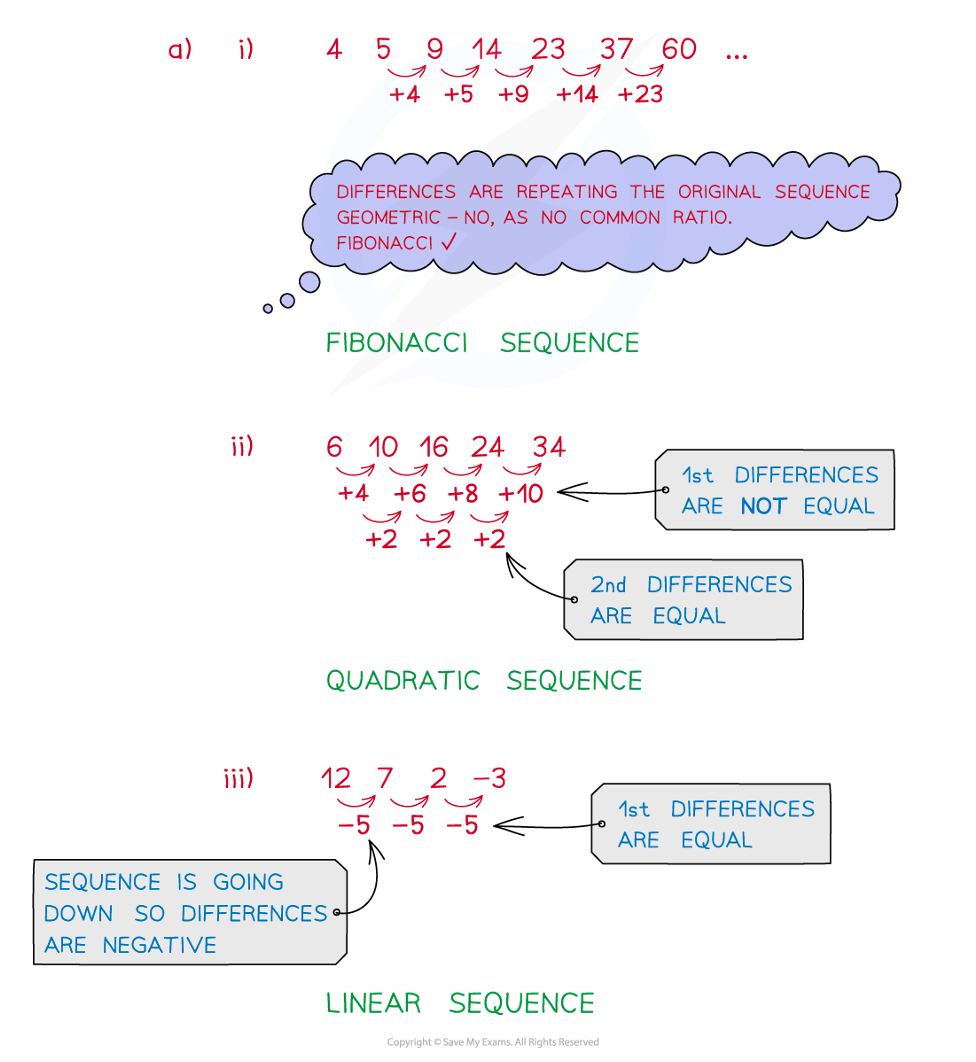
b)
The 3rd and 6th terms in a Fibonacci sequence are 7 and 31 respectively.
Find the 1st and 2nd terms of the sequence.
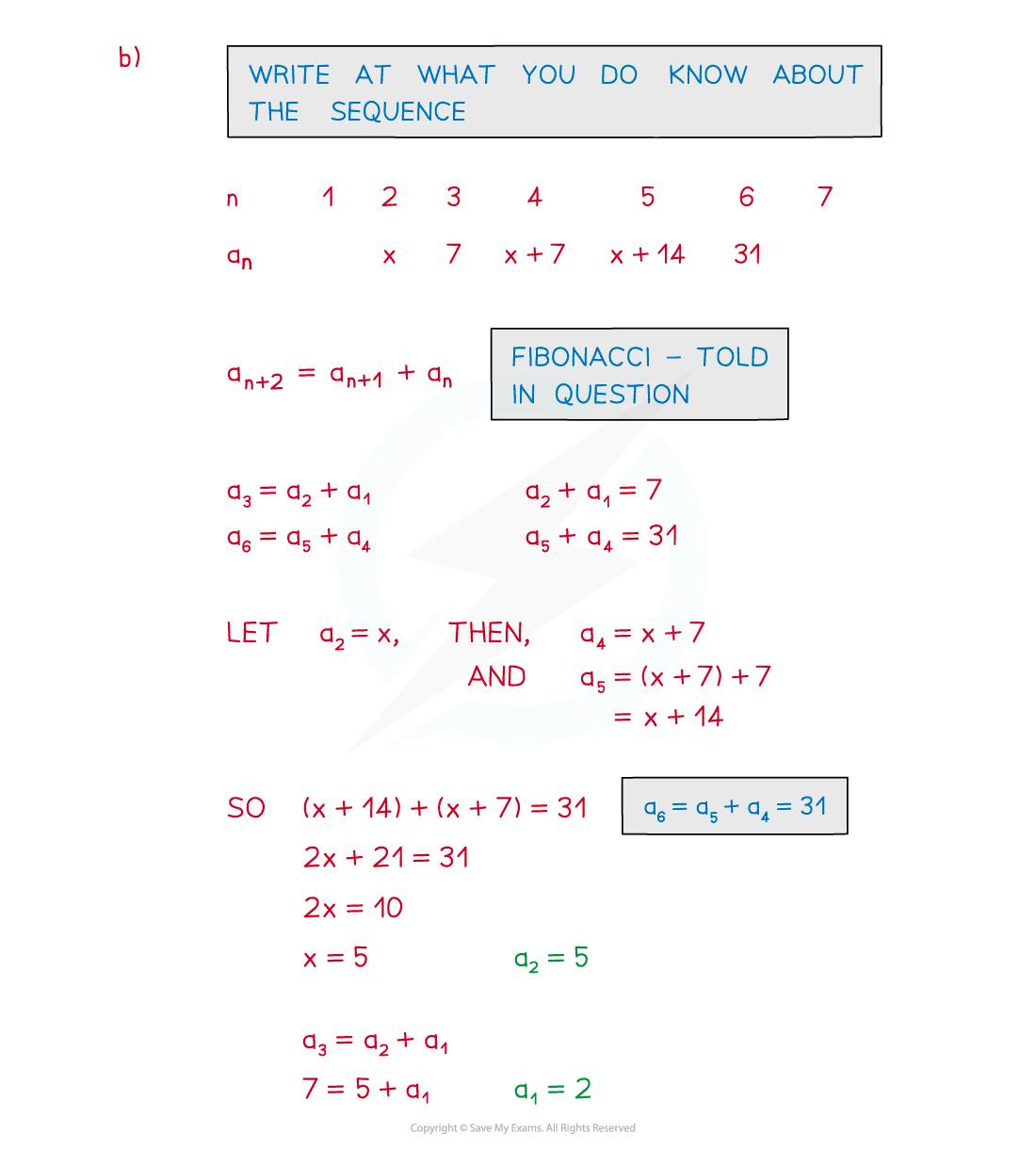

You've read 0 of your 5 free revision notes this week
Sign up now. It’s free!
Did this page help you?
